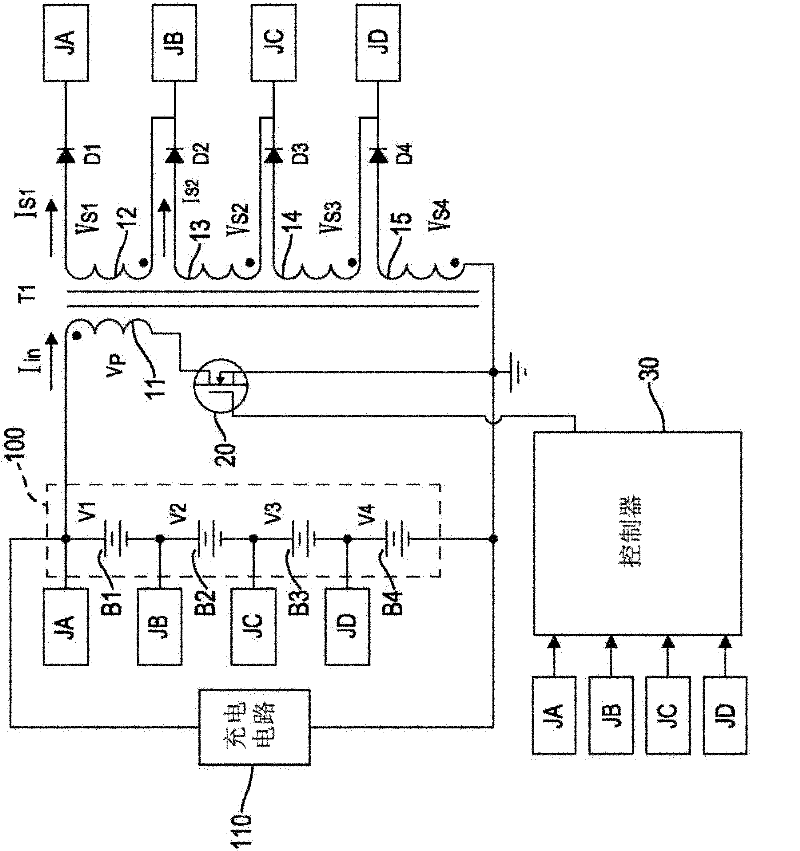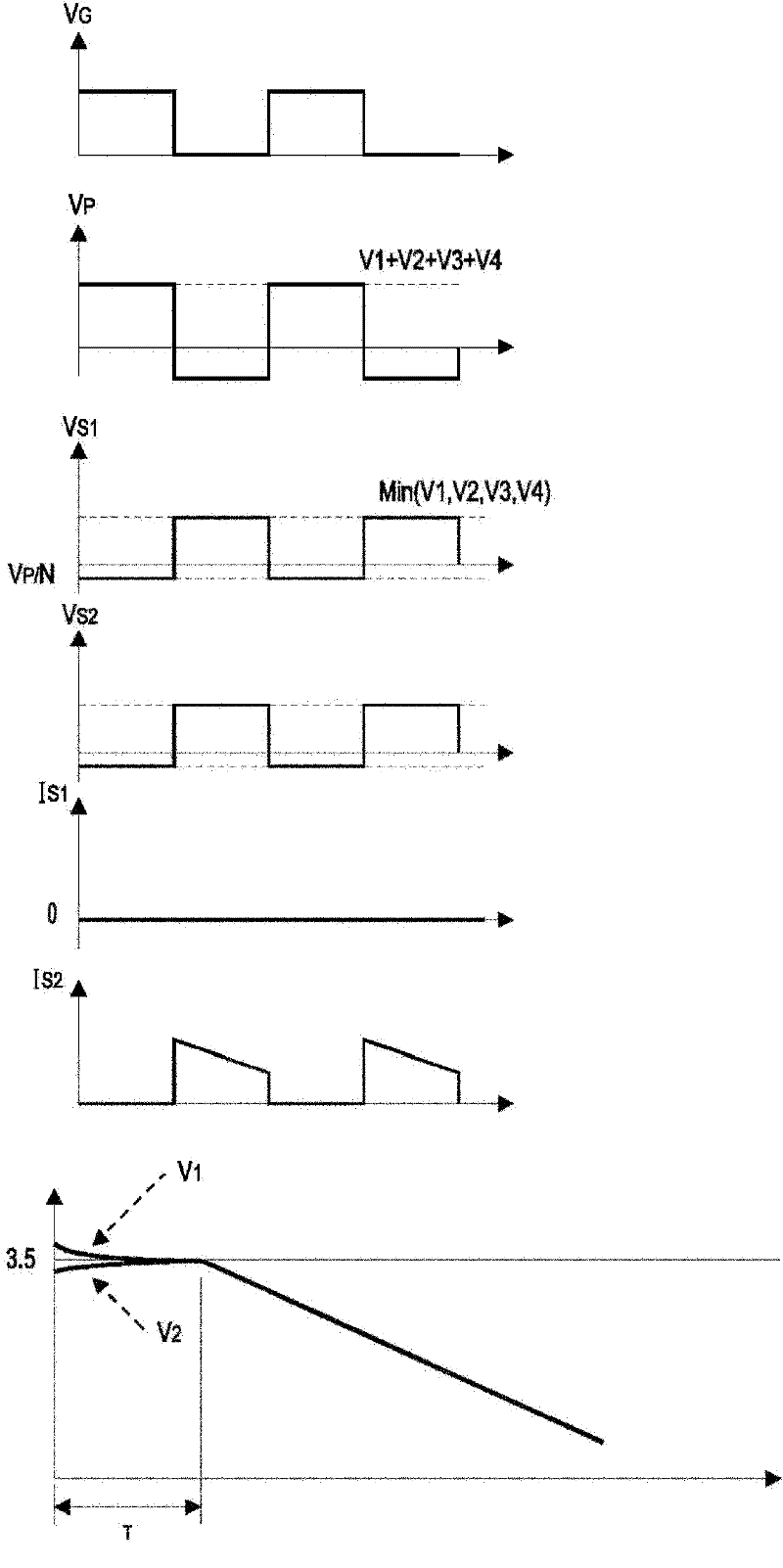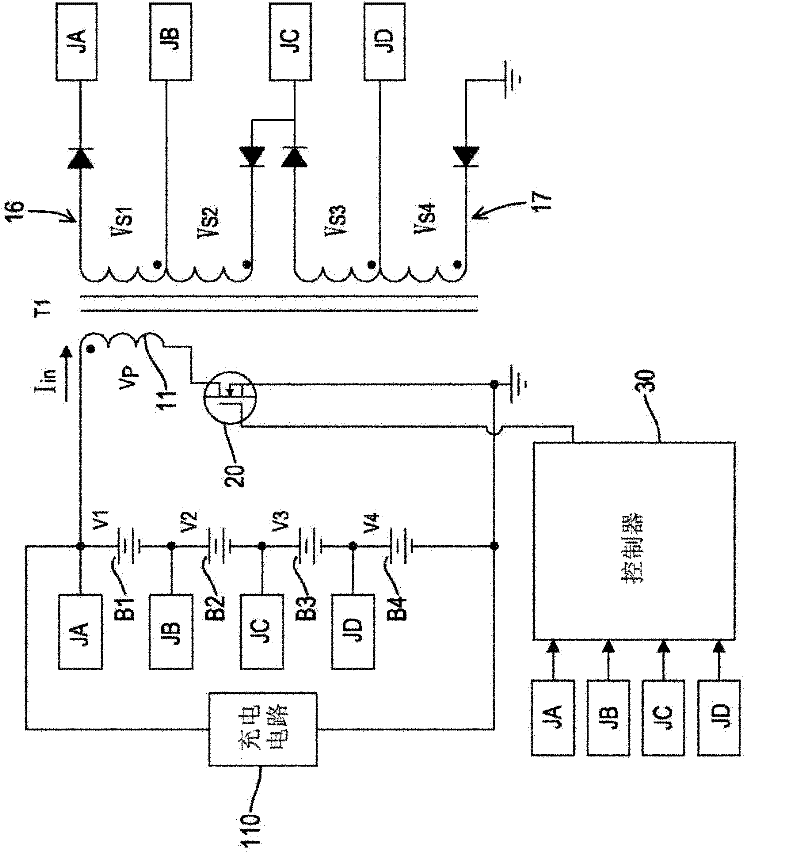Potential balancing circuit for battery pack
A potential balancing and battery pack technology, applied in charge balancing circuits, battery circuit devices, circuit devices, etc., can solve the problems of complicated circuit control, energy loss, and high cost, and achieve the effect of reducing the number of uses
- Summary
- Abstract
- Description
- Claims
- Application Information
AI Technical Summary
Problems solved by technology
Method used
Image
Examples
Embodiment Construction
[0042] Please refer to figure 1 As shown, it is the first embodiment of the battery pack potential balancing circuit of the present invention, which is applied to balance the electric power between multiple series connected battery units B1-B4, and the multiple series-connected battery units B1-B4 form a battery pack 100, as follows Detailed description Taking four battery units B1~B4 as an example, each battery unit B1~B4 can be a single battery or composed of several batteries connected in series, and the battery units B1~B4 use a charging circuit 110 connected in series Charging work. The present invention includes:
[0043] A flyback transformer T1 has a primary side winding 11 and a plurality of secondary side windings 12-15. In this embodiment, the number of secondary side windings 12-15 is consistent with the number of battery cells B1-B4. The primary side One end of the winding 11 is connected to one end of the battery pack 100; each secondary side winding 12-15 has...
PUM
 Login to View More
Login to View More Abstract
Description
Claims
Application Information
 Login to View More
Login to View More - R&D
- Intellectual Property
- Life Sciences
- Materials
- Tech Scout
- Unparalleled Data Quality
- Higher Quality Content
- 60% Fewer Hallucinations
Browse by: Latest US Patents, China's latest patents, Technical Efficacy Thesaurus, Application Domain, Technology Topic, Popular Technical Reports.
© 2025 PatSnap. All rights reserved.Legal|Privacy policy|Modern Slavery Act Transparency Statement|Sitemap|About US| Contact US: help@patsnap.com



